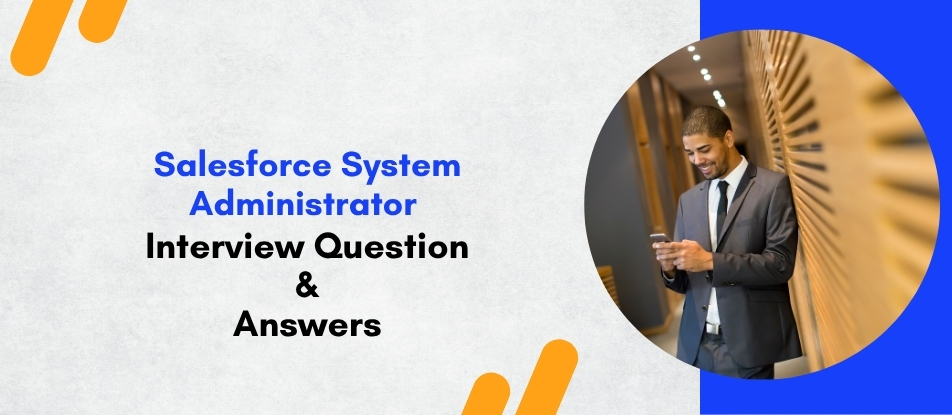
The Salesforce System Administrator course provides comprehensive training on managing users, configuring security settings, customizing the platform, and automating business processes using Salesforce’s declarative tools. Designed for aspiring administrators and professionals aiming for certification, this course builds a solid foundation in CRM administration. Participants gain hands-on experience in maintaining data quality, managing reports and dashboards, and ensuring smooth system performance across the organization.
Salesforce System Administrator Training Interview Questions Answers - For Intermediate
1. What is the difference between a Standard Profile and a Custom Profile in Salesforce?
A Standard Profile is a predefined profile provided by Salesforce with default settings and permissions, such as System Administrator or Standard User. These cannot be modified extensively. Custom Profiles, however, are created by administrators to tailor access and permissions according to specific user needs. Custom Profiles offer greater flexibility and can be adjusted to fit unique business processes by controlling access to objects, tabs, apps, and more.
2. How do you ensure data consistency when multiple users are editing the same record?
Salesforce uses a record-locking mechanism to prevent conflicts when multiple users try to edit the same record simultaneously. The first user to save the record will succeed, while others will receive an error indicating the record has been modified. To improve consistency, features like field-level audit tracking, validation rules, and required fields are used to control inputs and guide users to enter accurate, consistent data.
3. What is a Queue and when would you use one?
A Queue in Salesforce is used to manage workloads by holding records that need to be assigned to users or groups. Queues are commonly used for objects like Leads, Cases, or Custom Objects. Records in a queue can be taken by users manually or assigned automatically through rules. This is especially useful in service and sales teams to distribute tasks evenly and improve accountability.
4. How does Delegated Administration help manage users?
Delegated Administration allows you to assign limited admin privileges to non-admin users. This means a designated user can manage users within specific roles or assign certain profiles without accessing full administrative controls. It is especially useful in large organizations where departmental admins need to manage their own team members without compromising system-wide settings or data.
5. What are the key components of a User Record in Salesforce?
A User Record contains important information such as the user’s name, email, username, role, profile, and license. It also includes settings like locale, time zone, and language. Additionally, the record shows login history, permission sets assigned, and active/inactive status. Accurate user setup ensures correct access levels and system behavior for that user.
6. What are Public Groups and how are they different from Roles?
Public Groups are collections of users, roles, or other groups that can be used in sharing rules, folder access, and approvals. They are flexible and not tied to the organization’s hierarchy. In contrast, Roles define the record visibility based on the role hierarchy. Public Groups offer more versatility for grouping users across departments or functions who need common access to specific resources.
7. How does Organization-Wide Default (OWD) affect record visibility?
Organization-Wide Defaults set the baseline level of access to records for all users in an org. They determine whether records are Public, Private, or Read Only by default for each object. OWD settings are the foundation for record-level access and are supplemented by sharing rules, role hierarchy, and manual sharing to extend visibility when needed.
8. What is Field History Tracking and when should it be used?
Field History Tracking allows administrators to track changes to specific fields on standard and custom objects. When enabled, it captures the old and new values, the user who made the change, and the time of the update. This feature is valuable for auditing, compliance, and analyzing how and when data changes occur over time, especially on critical fields like status or deal value.
9. How would you handle duplicate records in Salesforce?
To manage duplicates, Salesforce offers Duplicate Management tools like Matching Rules and Duplicate Rules. These allow administrators to define criteria for identifying duplicates and set actions like blocking or alerting the user upon creation or update. Third-party tools or deduplication apps from AppExchange can also be used to cleanse existing data. Periodic reviews and data import validations help maintain data quality.
10. What is a Sandbox and what are the different types available?
A Sandbox is a copy of the production environment used for development, testing, and training without affecting live data. Salesforce offers different types of Sandboxes including Developer, Developer Pro, Partial Copy, and Full Sandbox. Each varies in terms of storage, refresh interval, and the type of data copied. Full Sandboxes replicate production data and metadata, making them ideal for full-scale testing.
11. How would you manage login access for external consultants or vendors?
For external users, you can create a separate profile with restricted access and assign them to a specific role or group. Use Login IP Ranges and Login Hours to control when and where they can access the system. Enabling login history monitoring and setting up permission sets with least-privilege access ensures security while allowing them to perform their required tasks.
12. What is the purpose of a Custom Object and when should it be used?
A Custom Object is created when standard objects do not meet specific business needs. It allows organizations to store and manage custom data unique to their operations. For example, a company tracking training courses might create a custom object called “Training Session” with custom fields for dates, instructors, and completion status. Custom objects support relationships, validation rules, and automation like any standard object.
13. What steps do you take when deploying changes from Sandbox to Production?
Deployment involves validating and moving metadata from Sandbox to Production using tools like Change Sets, ANT Migration Tool, or Salesforce DevOps tools. The process includes gathering requirements, testing in Sandbox, preparing a deployment plan, validating the change set in production, and finally deploying. Post-deployment activities may include user training, enabling features, or verifying data integrity.
14. How would you handle mass data updates or corrections?
Mass data updates can be done using tools like Data Loader or the Data Import Wizard, depending on the volume and complexity. Before performing updates, it’s important to export existing data for backup. Mapping fields correctly and testing on a subset is essential. After the update, you should validate changes through reports or record views and monitor any validation rule errors.
15. What are Global Picklists and how are they different from regular picklists?
Global Picklists, also known as Global Value Sets, are centrally managed picklist values that can be reused across multiple objects. They help enforce consistency and make managing values easier, especially when the same field appears in different objects. Regular picklists are managed independently on each object and can have different sets of values, which may lead to inconsistency across the system.
Salesforce System Administrator Training Interview Questions Answers - For Advanced
1. How do you manage large-scale user provisioning and de-provisioning in Salesforce?
Large-scale user provisioning requires automation and standardized processes to minimize manual effort and errors. Tools like Salesforce Identity, SAML/SSO integrations, and Identity Connect (for syncing with Active Directory) are often used. For user provisioning, administrators can use automated scripts via the Salesforce API or tools like Workbench, JIT (Just-In-Time) provisioning, or third-party IAM solutions. De-provisioning includes deactivating users, reassigning their records, removing permissions, and revoking session tokens. Scheduled automation using Flow, Apex, or external orchestration tools ensures that users are correctly onboarded or offboarded in compliance with security policies.
2. How does Salesforce Shield enhance security and compliance in an enterprise environment?
Salesforce Shield provides a suite of tools for advanced security and compliance: Platform Encryption, Field Audit Trail, and Event Monitoring. Platform Encryption allows data-at-rest encryption for sensitive information without disrupting business processes. Field Audit Trail extends the standard history tracking limits and allows long-term retention of change data, which is critical for compliance. Event Monitoring offers real-time insights into user behavior, such as logins, data exports, and API usage. This makes Shield essential for industries like finance and healthcare that require stringent data protection and auditing capabilities.
3. What considerations go into designing a secure public site using Salesforce Experience Cloud?
When creating a public site via Experience Cloud, it’s critical to restrict access to only necessary public data. You must assign a secure guest user profile with read-only access to specific objects and fields. Avoid exposing sensitive fields and enable field-level security rigorously. Guest user sharing rules should be used to define access boundaries. Use HTTPS, apply rate limiting, and enable CAPTCHA for forms. Logging and monitoring should be implemented to track unusual activities. Additionally, use custom error pages to prevent leaking internal system information.
4. How would you implement a robust backup and disaster recovery plan in Salesforce?
A robust backup strategy includes scheduling regular exports using Salesforce’s native weekly data export or third-party solutions like OwnBackup or Spanning. Metadata should also be backed up using tools like ANT or Salesforce CLI. For disaster recovery, maintain clear documentation on recovery procedures, including how to restore data, reassign ownership, and validate integrity post-recovery. Sandbox environments can be used to test restoration procedures. The plan should include roles and responsibilities, timelines, and a communication strategy in case of a disaster.
5. How can you prevent and monitor API abuse in Salesforce?
To prevent API abuse, you can limit API usage by setting API usage thresholds per user or integration. Use OAuth for secure authentication and scope API permissions precisely. Enable and monitor Event Monitoring logs to detect suspicious activities such as abnormal API call patterns. Use Named Credentials and Connected Apps with policies to restrict who can authenticate. Set up alerts through Flow or integration with SIEM tools to detect anomalies. Regular audits of integration users and tokens should also be performed.
6. What is the difference between Classic and Lightning Record Pages, and how does it impact user adoption?
Classic pages are static and offer limited customization, while Lightning Record Pages provide dynamic layouts with components tailored to specific profiles, apps, or record types. Lightning pages improve usability by displaying relevant information, reducing clicks, and supporting drag-and-drop design. For user adoption, it’s important to involve stakeholders during design, perform usability testing, and provide change management support including training and feedback mechanisms. Migrating to Lightning enhances productivity but requires thoughtful planning to avoid overwhelming users with too much change.
7. What are key performance metrics a Salesforce Admin should monitor regularly?
Admins should monitor user login history, API usage, storage usage, data and file limits, scheduled job performance, page load times, and automation errors. Monitoring report and dashboard usage helps determine user engagement. Field utilization reports identify unused fields, helping clean up metadata. Login history and failed logins can flag potential security issues. Keeping an eye on governor limits ensures the platform is not being stretched beyond its performance envelope. These insights allow proactive maintenance and strategic decision-making.
8. How would you manage change requests and ensure proper governance in a Salesforce environment?
Change management begins with capturing requests using a structured form or system like JIRA or ServiceNow. Each request is evaluated for impact, priority, and risk. Approved changes should go through version control, peer review, and thorough testing in sandbox environments. Changes should be deployed using CI/CD tools or change sets, with rollback plans in place. Documentation and stakeholder communication are essential. Regular change advisory board (CAB) meetings can help maintain governance and align changes with business goals.
9. What are Governor Limits in Salesforce and how do they affect Admin decisions?
Governor Limits are runtime limits enforced by Salesforce to ensure shared resource stability in a multi-tenant environment. These include limits on SOQL queries, DML statements, CPU time, heap size, and more. Admins must understand these limits when designing automation, especially for Flows, validation rules, and Process Builders. Complex logic should be handled via Apex in a way that avoids hitting limits. Batch jobs and asynchronous processing are often used to stay within limits. Monitoring these limits helps prevent automation failures and performance degradation.
10. How do you handle a situation where multiple business units need different business processes for the same object?
Use Record Types to segment business processes within the same object. Each Record Type can have its own page layout, picklist values, and automation. Profiles and permission sets control which users can access specific record types. It’s important to clearly define processes upfront and ensure that the design doesn’t create confusion or overlap. Maintain documentation for each process and conduct stakeholder reviews to validate alignment with business needs. Limit the number of record types to what is necessary for maintainability.
11. How do you plan a secure integration between Salesforce and a third-party system?
Start by identifying the integration type: REST, SOAP, or middleware-based. Use OAuth 2.0 for secure authentication and Named Credentials for managing endpoint access. Encrypt sensitive fields using Shield Platform Encryption and mask data where possible. Set up IP whitelisting, rate limits, and input validation on both ends. Use Platform Events or External Services for real-time, secure communication. Perform security testing, including penetration testing, before going live. Document the data flow, error handling, and logging strategy to support ongoing monitoring.
12. Describe the difference between Master-Detail and Lookup relationships and when to use each.
A Master-Detail relationship tightly binds two objects—if the parent is deleted, all related child records are also deleted. The child record inherits ownership and sharing from the parent, and it cannot exist without it. In contrast, a Lookup relationship is looser; it allows optional linking between objects, and deletion of the parent does not impact the child. Use Master-Detail when you need dependency, roll-up summaries, or strong data coupling. Lookup is better for more independent objects or optional relationships.
13. How do you approach implementing a new Salesforce feature requested by business users?
Start by understanding the business requirement and aligning it with current Salesforce capabilities. Conduct a gap analysis to identify if declarative tools (Flow, Process Builder, Validation Rules) can meet the need or if custom development is required. Create a proof of concept in a sandbox and involve key users for feedback. Evaluate the impact on existing processes, data, and security. Document the solution, obtain approvals, and move to UAT before deploying to production. Post-deployment, provide training and support to ensure smooth adoption.
14. What is Dynamic Forms and how does it improve UI/UX in Salesforce?
Dynamic Forms allow administrators to place fields and sections anywhere on a Lightning Record Page, with conditional visibility based on record values, device, or user profile. This improves user experience by reducing clutter and showing only relevant fields. It also decouples the page layout from the object, making it easier to manage complex layouts. Dynamic Forms enhance performance by loading only the necessary components. It’s currently available for custom objects and expanding to standard objects.
15. How would you identify and clean up technical debt in a Salesforce org?
Start by analyzing unused fields, page layouts, record types, reports, workflows, and process builders. Use tools like Salesforce Optimizer and metadata analysis tools to identify stale components. Engage stakeholders to confirm whether components are still in use. Develop a phased plan to deactivate and eventually delete unused elements. Document every change and maintain a cleanup log. Align cleanup efforts with upcoming releases to reduce risks. Regularly performing org health assessments helps maintain scalability and manageability.
Course Schedule
| Jan, 2026 | Weekdays | Mon-Fri | Enquire Now |
| Weekend | Sat-Sun | Enquire Now | |
| Feb, 2026 | Weekdays | Mon-Fri | Enquire Now |
| Weekend | Sat-Sun | Enquire Now |
Related Courses
Related Articles
Related Interview
Related FAQ's
- Instructor-led Live Online Interactive Training
- Project Based Customized Learning
- Fast Track Training Program
- Self-paced learning
- In one-on-one training, you have the flexibility to choose the days, timings, and duration according to your preferences.
- We create a personalized training calendar based on your chosen schedule.
- Complete Live Online Interactive Training of the Course
- After Training Recorded Videos
- Session-wise Learning Material and notes for lifetime
- Practical & Assignments exercises
- Global Course Completion Certificate
- 24x7 after Training Support

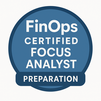

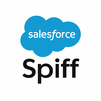

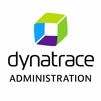


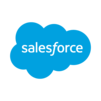


 Join our Live Instructor-Led online classes delivered by industry experts
Join our Live Instructor-Led online classes delivered by industry experts